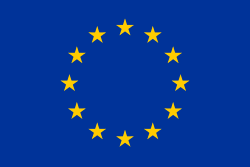| European Union regulation | |
| Text with EEA relevance | |
 | |
| Title | Regulation on classification, labelling and packaging of substances and mixtures, amending and repealing Directives 67/548/EEC and 1999/45/EC, and amending Regulation (EC) No 1907/2006 |
|---|---|
| Made by | European Parliament and Council |
| Made under | Art. 95 (EC) |
| Journal reference | L353, 31.12.2008, pp. 1–1355 |
| History | |
| Date made | 16 December 2008 |
| Entry into force | 20 January 2009 |
| Preparative texts | |
| Commission proposal | COM (2007) 355 final, C191, 17.8.2008, p. 9 |
| EESC opinion | C204, 9.8.2008, pp. 47–56 |
| EP opinion | 3 September 2008 |
| Other legislation | |
| Replaces | Dir. 67/548/EEC Dir. 1999/45/EC |
| Amends | Reg. (EC) No 1907/2006 |
| Current legislation | |
The CLP Regulation [1] (for "Classification, Labelling and Packaging" [2] ) is a European Union regulation from 2008, which aligns the European Union system of classification, labelling and packaging of chemical substances and mixtures to the Globally Harmonised System (GHS). It is expected to facilitate global trade and the harmonised communication of hazard information of chemicals and to promote regulatory efficiency. It complements the 2006 Registration, Evaluation, Authorisation and Restriction of Chemicals (REACH) Regulation (EC No 1907/2006) [3] and replaces an older system contained in the Dangerous Substances Directive (67/548/EEC) [4] and the Dangerous Preparations Directive (1999/45/EC). [5]